Curious about Cremona, Italy: a city of vintage violins, mustard fruit and sweet surprises
This website uses affiliate links which may earn a commission at no additional cost to you. As an Amazon Associate I earn from qualifying purchases.
Updated: 21st July 2019
PRODUCED IN PARTNERSHIP WITH LOMBARDIA TOURISM
‘I don’t think I’ll enjoy a violin museum’, I confessed to Janet as we parked up on the last day of our Lombardy road trip. I looked around guiltily; it likely wasn’t the best confession to make in Cremona, a city that has built a celebrity status around the stringed instrument. But to be honest, I knew little more about this day trip from Milan, just over 90 minutes away from the region’s fashion capital.
Spoiler alert: the Violin Museum was more interesting than anticipated. Cremona, though, does have a lot more to offer than displays dedicated to global musical talent. Enough to make it still well worth putting on your Lombardy plan, even if you, too, also don’t fancy a violin museum.
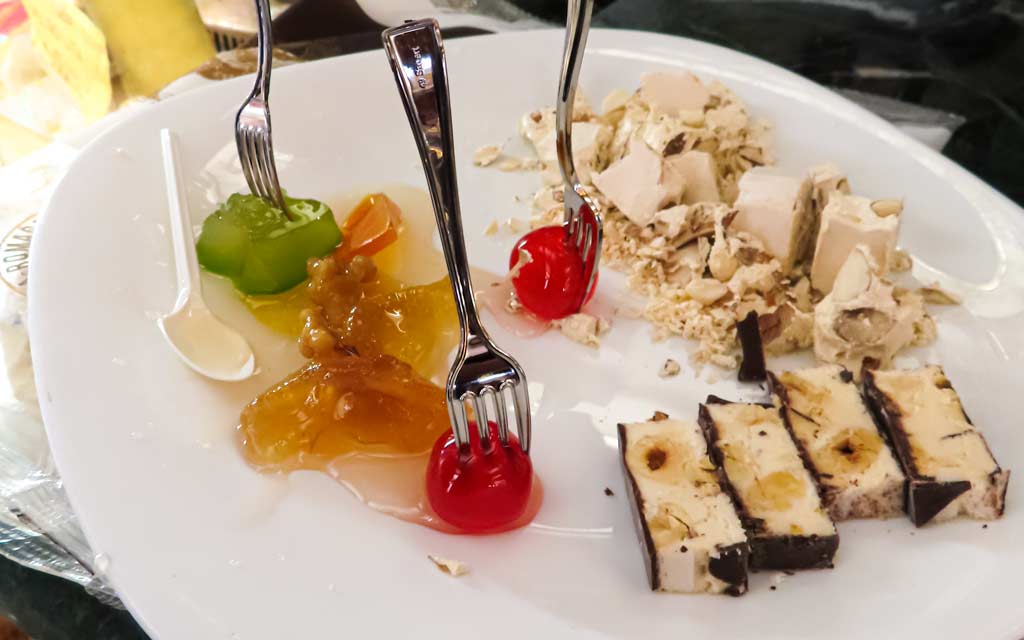
‘It’s especially popular at Christmas’, Elena, at the tourist office, had advised us, as Janet and I shared confused glances.
‘But… but, it’s fruit in Mustard’ I said in disbelief, wondering if my enquiry about regional food specialities had been lost in translation. Curious and slightly concerned, we headed over to Formaggi D’Italia, a small local produce store sitting under the shadow of the city’s famous tower.
Mostarda di Cremona, usually consisting of candied fruit coated in a mustard-flavoured syrup, was indeed a local speciality, with a history dating back to the Roman Empire and the preservation of fruit.
Never one to say no to food, especially in Italy, I skewered a cherry onto my fork and prepared for the worst. The slightly spicy syrup still retained its sugary base, and the crystalised fruit complemented it well. I was kind of in disbelief, but Mostarda di Cremona actually tasted pretty damn lovely, even at 10 in the morning.
Today was going to be a day of Cremona surprises!
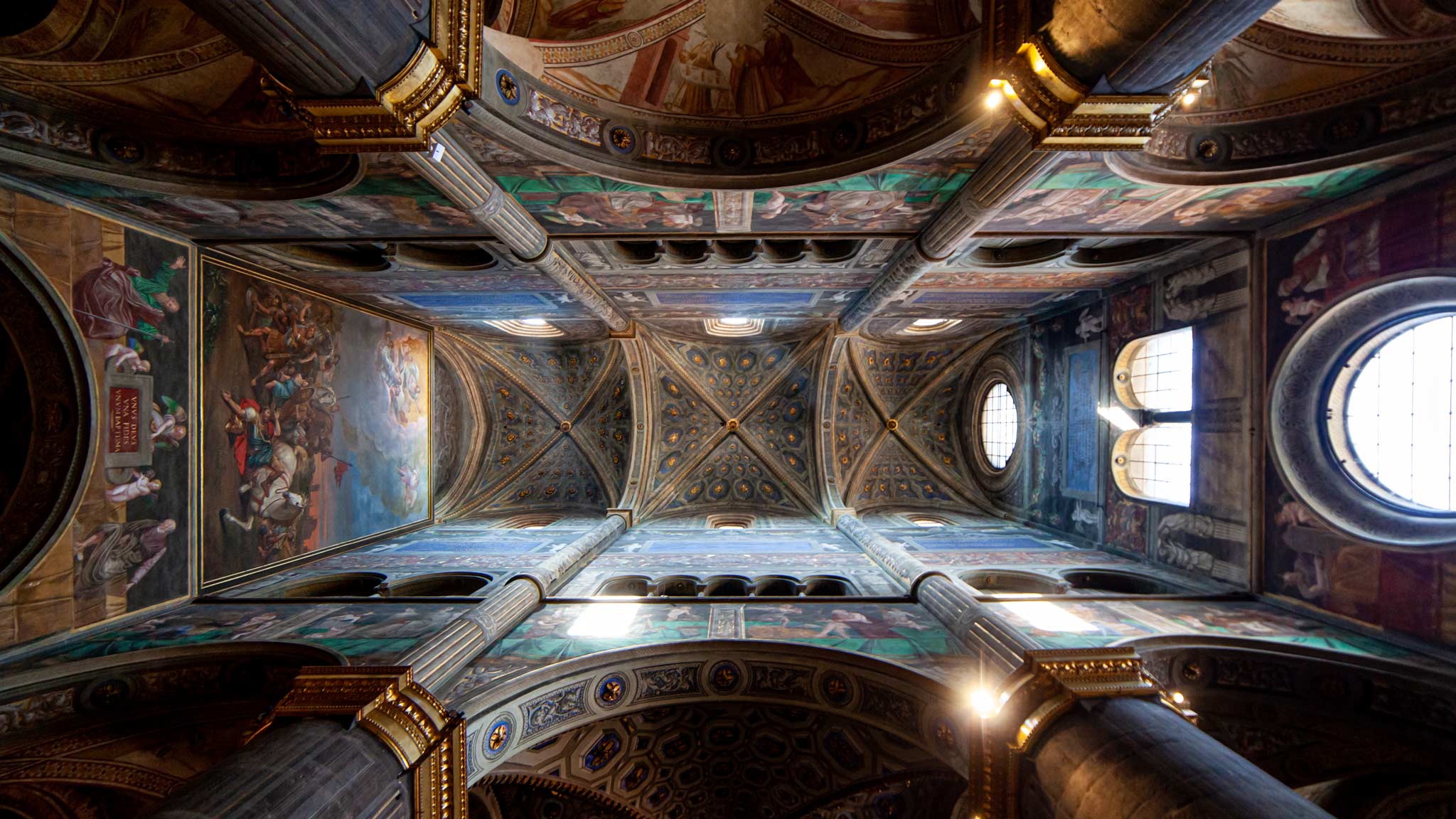
After a slightly bizarre breakfast, we set out to explore the small city of Cremona. Sitting close to the border with Emilia Romagna, the next region down from Lombardy, I quickly noticed influences from both areas in the architecture.
Porticos led to small squares with local restaurants, all radiating from the main square where the imposing and quite unique Cathedral took pride of place.
The main square is home to the city’s key pieces of architecture, including the 16th-century Torrazzo of Cremona, the mascot and icon.
Connected to the Cathedral, the Tower of Cremona boasts a height of over 110 metres, making it the third tallest brick tower in the world. As with most Italian cities, you’ll need to climb it for some of the best views. Once you reach the top, which comes complete with traffic lights due to how narrow it is, you can look across Lombardy and neighbouring Emilia Romagna.
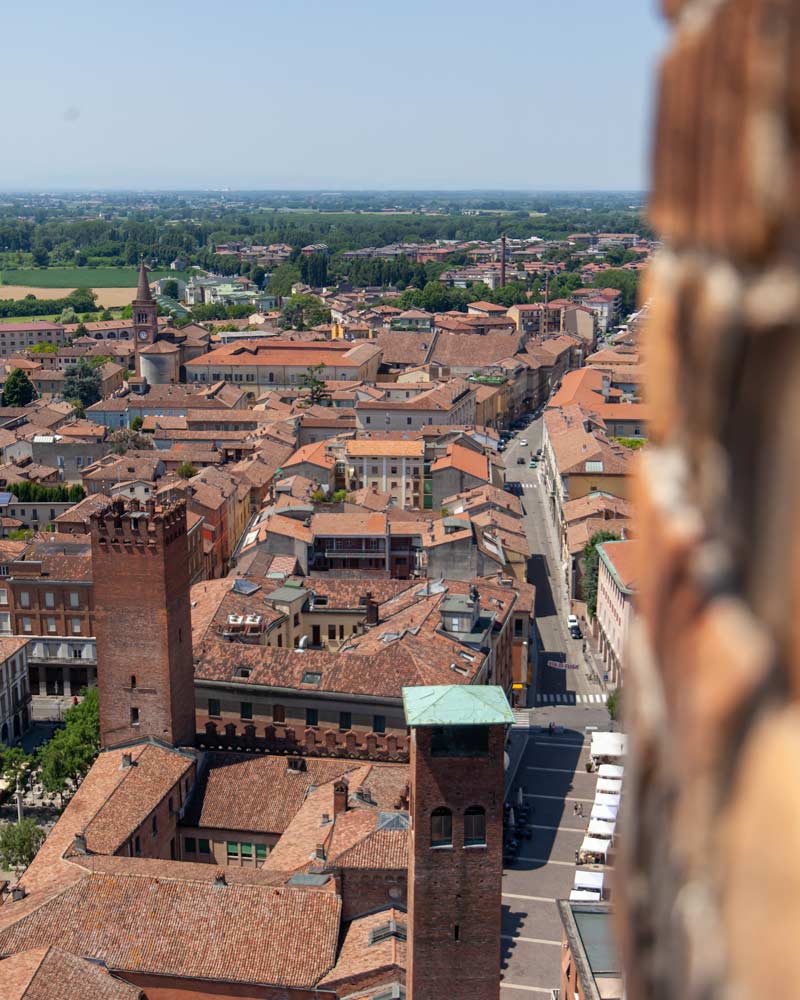
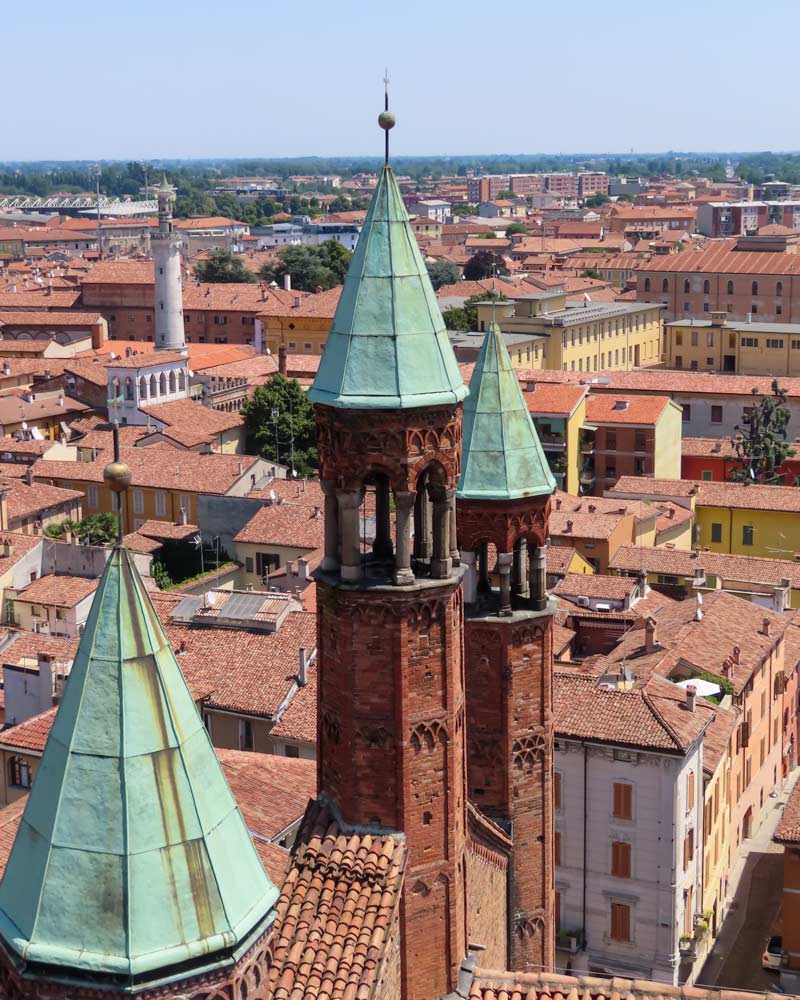
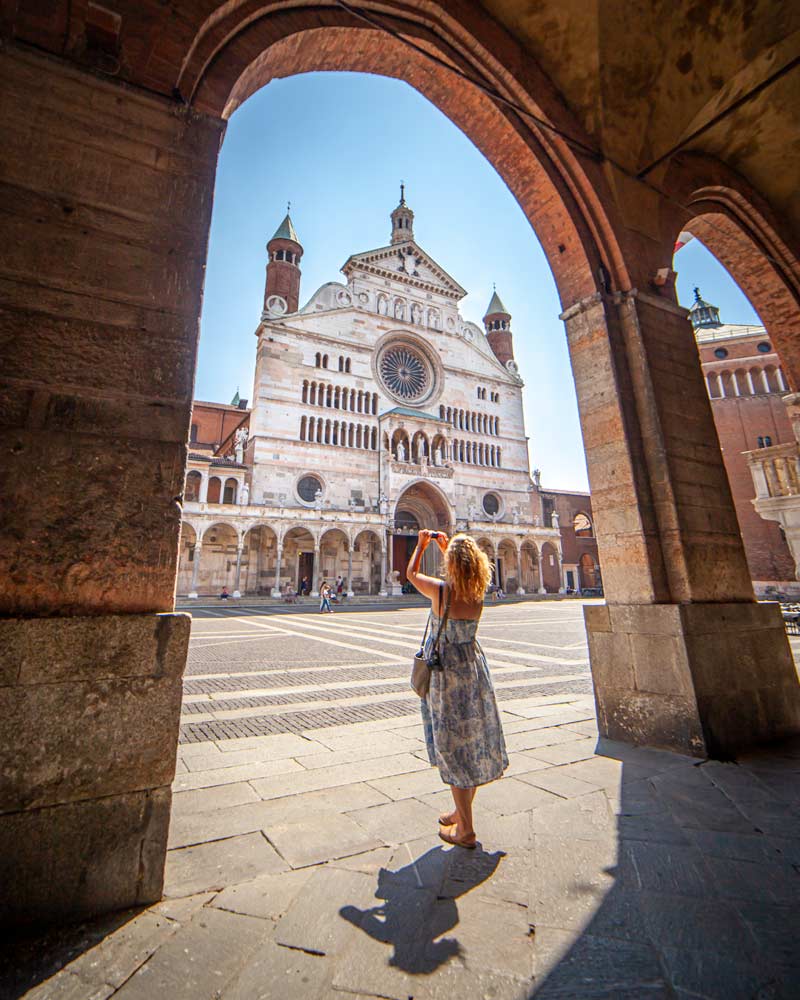
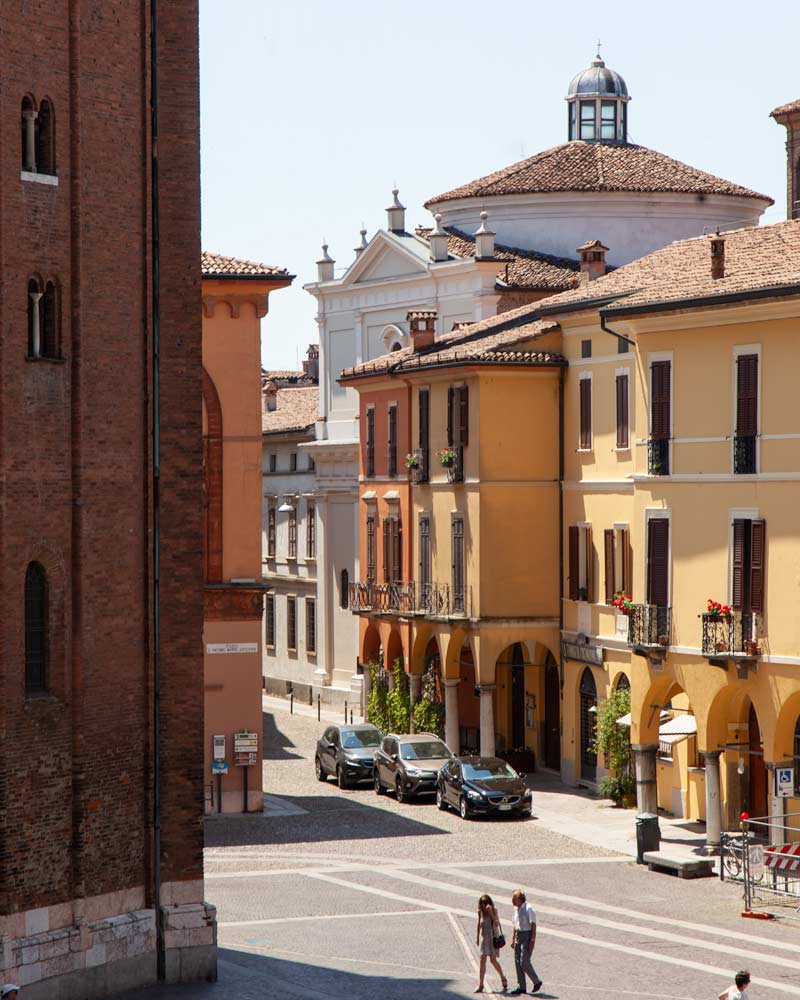
Back on the ground level, you can admire the astronomical clock attached to the tower and the impressive-looking Cremona Cathedral.
A stunning example of Romanesque art, the Cathedral nearly didn’t get off the ground. While construction started in the 1100s, an earthquake came along and severely damaged the Cathedral shortly after. Eventually, some 60 years later, construction was completed, but with various extensions and additions, you’ll notice the array of styles both inside and outside the Cathedral.
Gothic, Baroque, and Renaissance features all appear, and while the exterior is grand, the interior artwork really stands out.
The frescoes inside were created by well-known artists, and the story of Mary and Christ follows around the interior. The trickey art will make you feel like eyes are following you, and some of the masterstrokes of painting have created an almost 3D element.
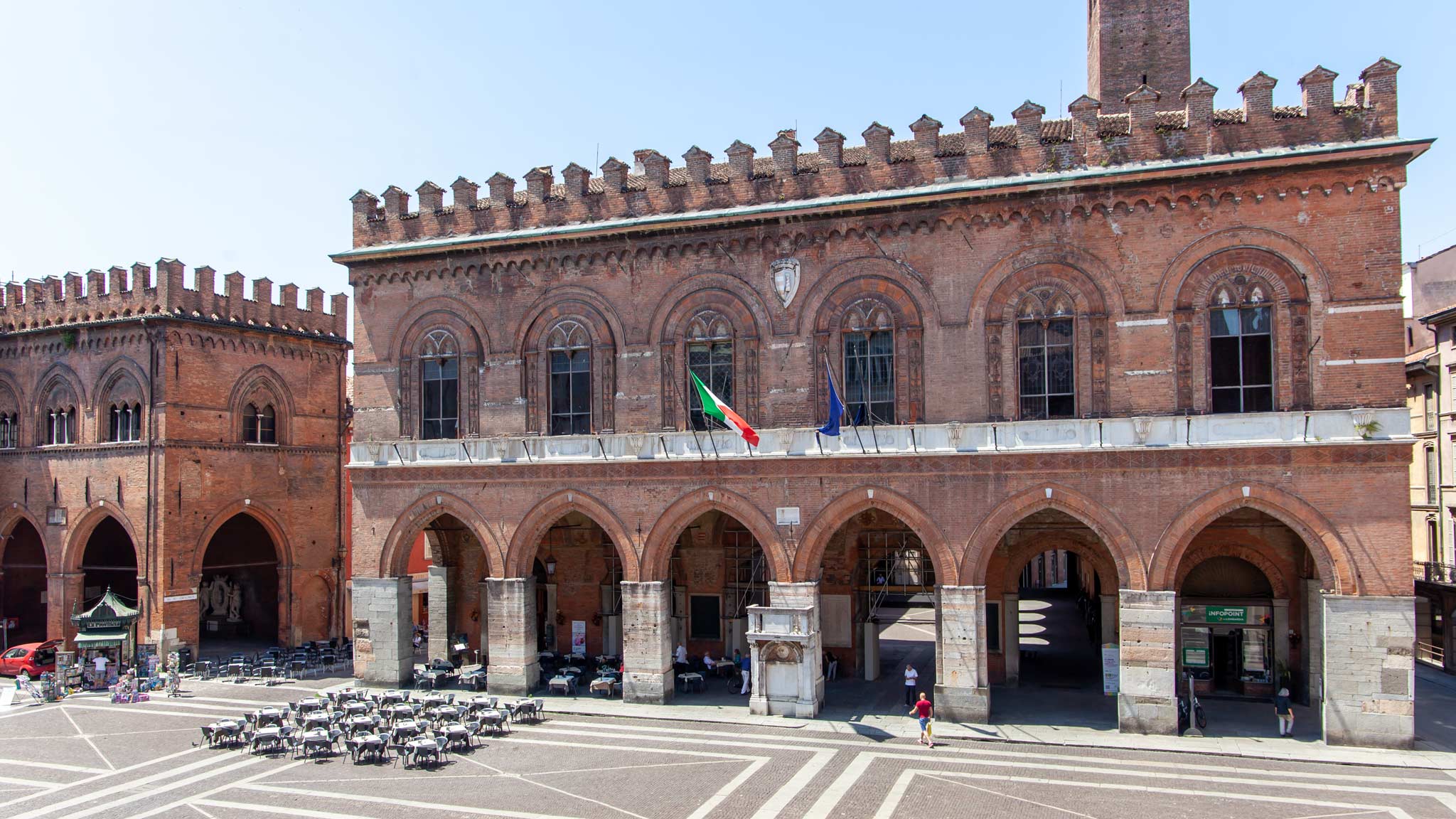
As is common in the region, an octagonal Baptistery sits alongside the Cathedral, which was built shortly after the completion of the main building.
For some of the best views of the Cathedral, head to the opposite building, the town hall. Here, the upper-level windows help you get a better view of the detailed facade.
Most importantly though, do get and wander the quaint, colourful streets of Cremona, as with most of Italy, the joy is found down the alleyways of local producers, warm-hued houses, and small coffee shops perfect for taking a break.
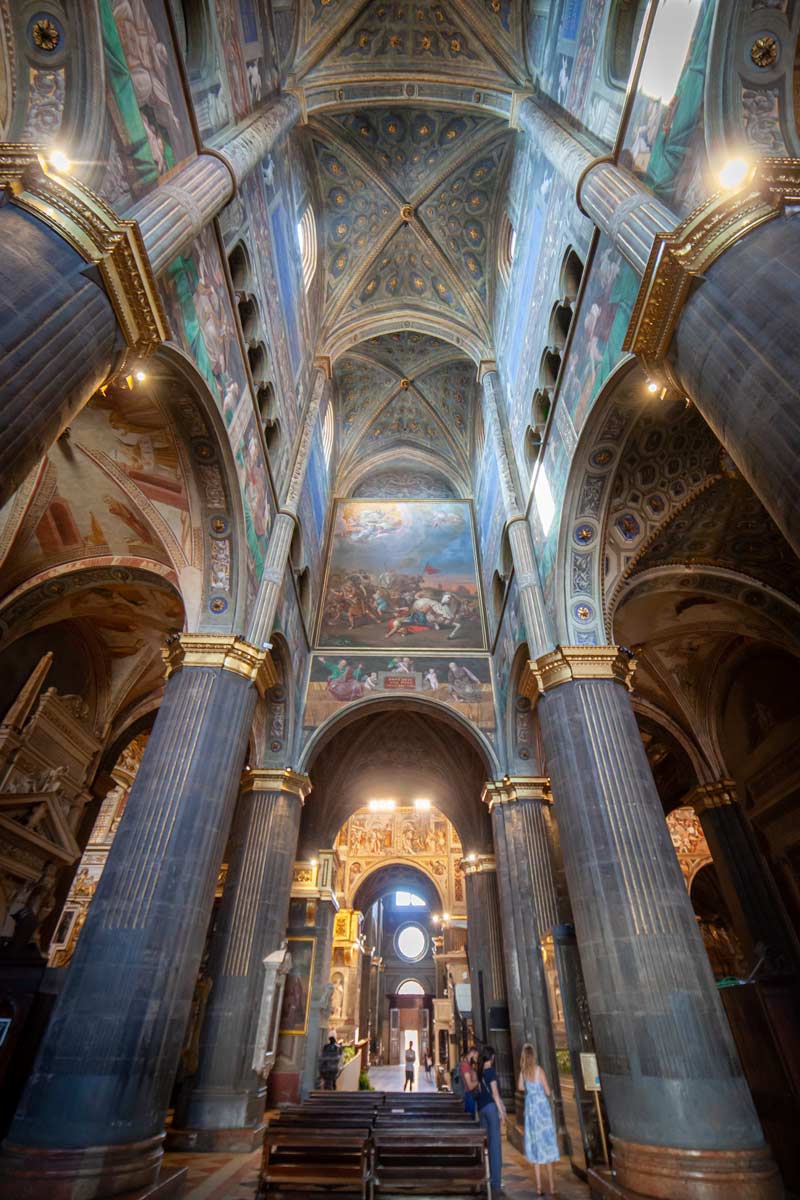
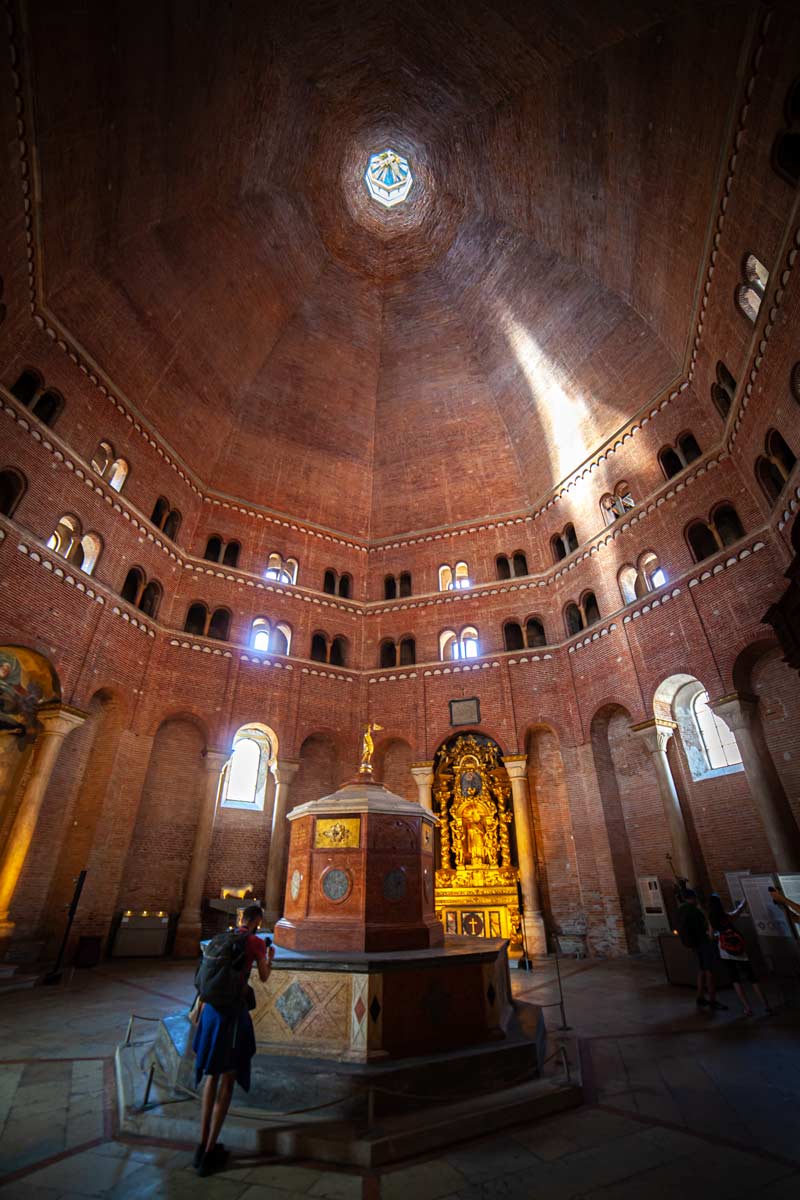
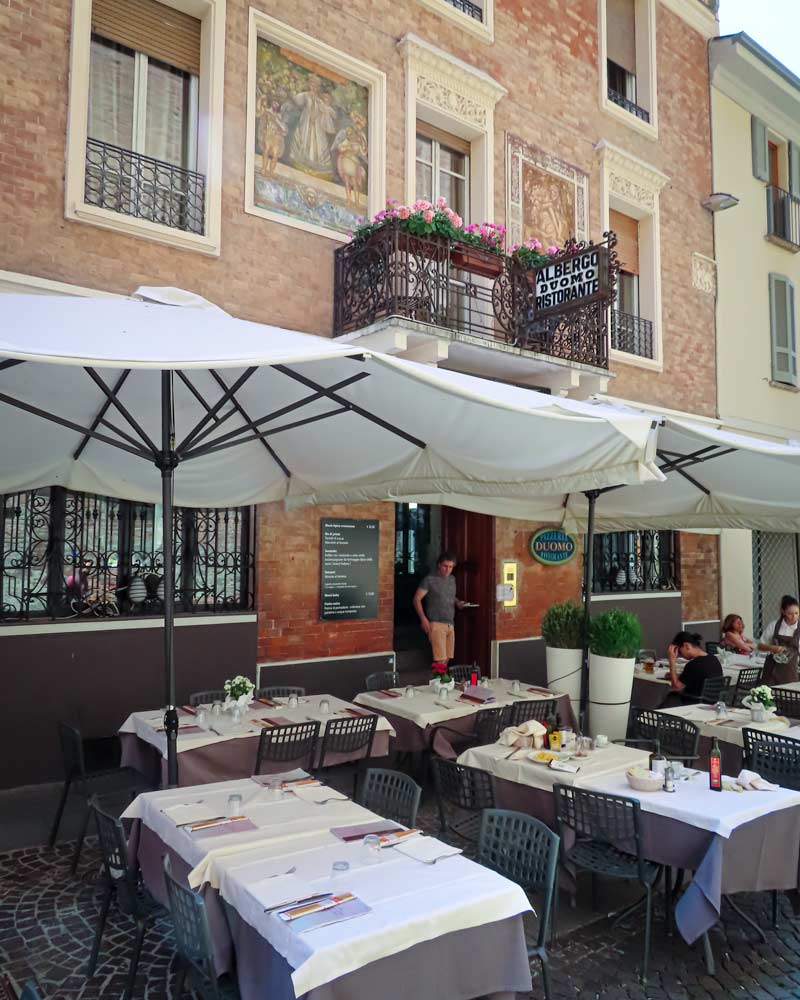
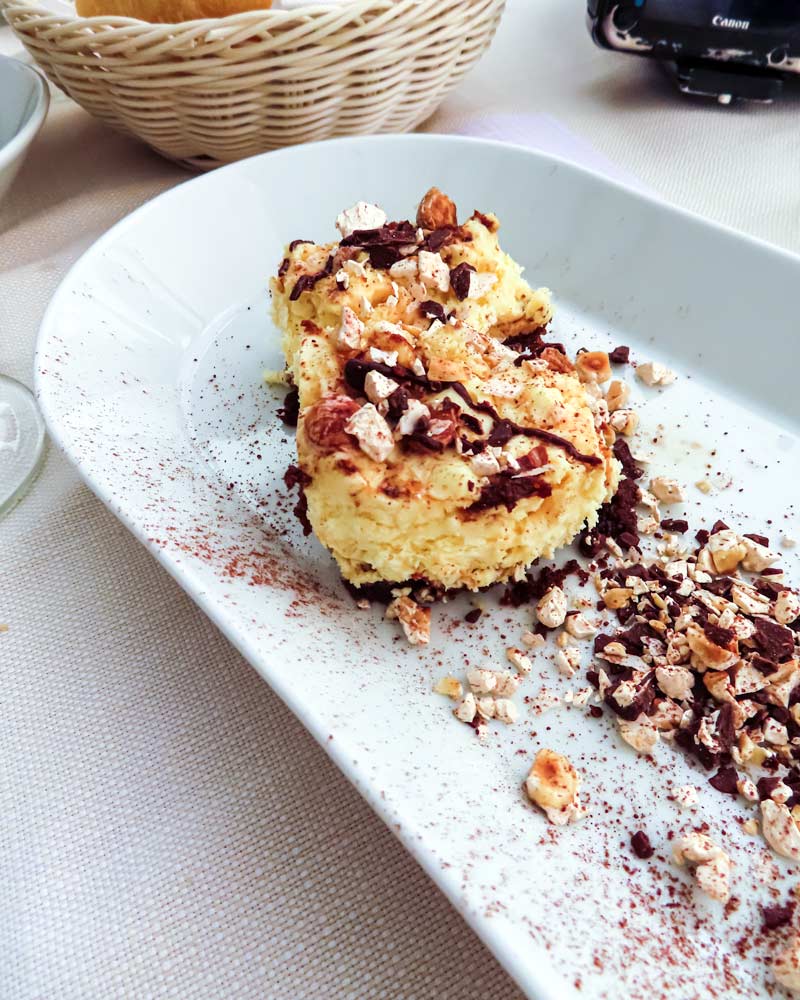
By midday, the city felt deserted, a strange feeling in late June, especially coming from the buzzing metropolis of Milan. Perhaps the burning sun had driven the locals indoors, but I still don’t think this city is on the top of the tourist radar yet.
Pumpkin stuffed pasta, Tortelli di Zucca, is a staple from nearby Mantua, but it can also be found on menus here in Cremona and is a delicious lunch you must try. Playing full-blown tourists, we sat down to enjoy ours in Ristorante Pizzeria Duomo Cremona, where the terrace looks onto the Cathedral front.
For dessert, I highly recommend the Mousse di Torrone Cremonese, which uses the Nougat famous from Cremona in a soft and delicious form.
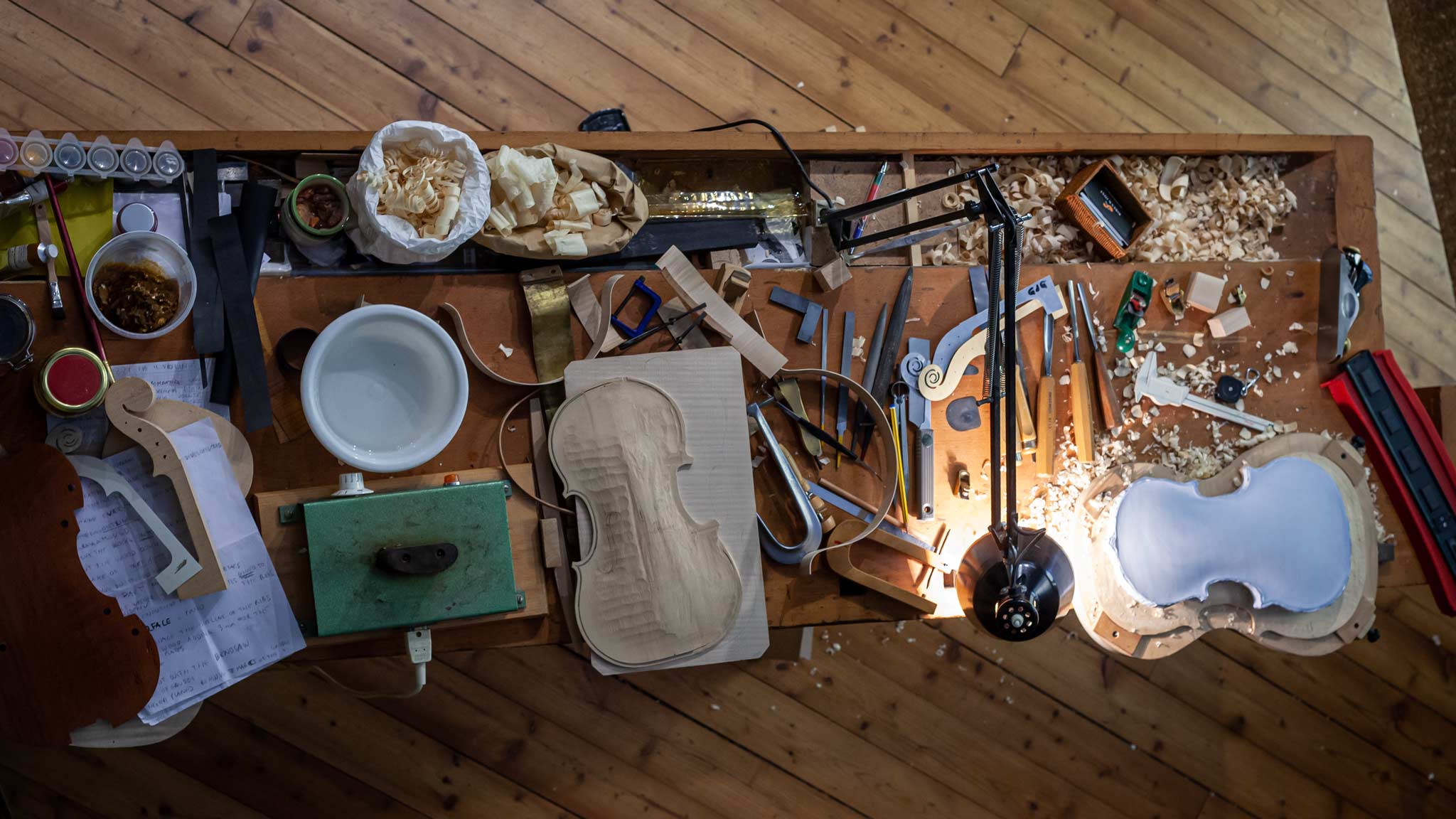
I can’t write about Cremona without covering the violins this city is most famous for, and while I didn’t overly enjoy the Violin Museum, there’s another way to appreciate the beauty of these instruments.
The Violin Museum itself is modern and well-equipped, although the €10 entrance fee restricts interest to those already passionate about the instrument. Inside, an audio-guide tour will take you through the rooms where violins by famous players and composers are preserved, and the violin-making history of the city is documented.
To give you a brief history lesson, it was here in Cremona that the modern violin prototype was invented. Now, it is one of the most famous places for producing violins worldwide, if not the most famous. Antonio Stradivari is a well-known name for producing the best quality violins in the world, and it was in the workshops where many of his stringed instruments were made, often referred to as Stradivarius.
If you are a little intrigued by the violin-making process, then I highly suggest that rather than, or in addition to the museum, you visit one of the Violin workshops that are still active in the city. This fascinated me, especially learning how much goes into making a handmade Cremona Violin.
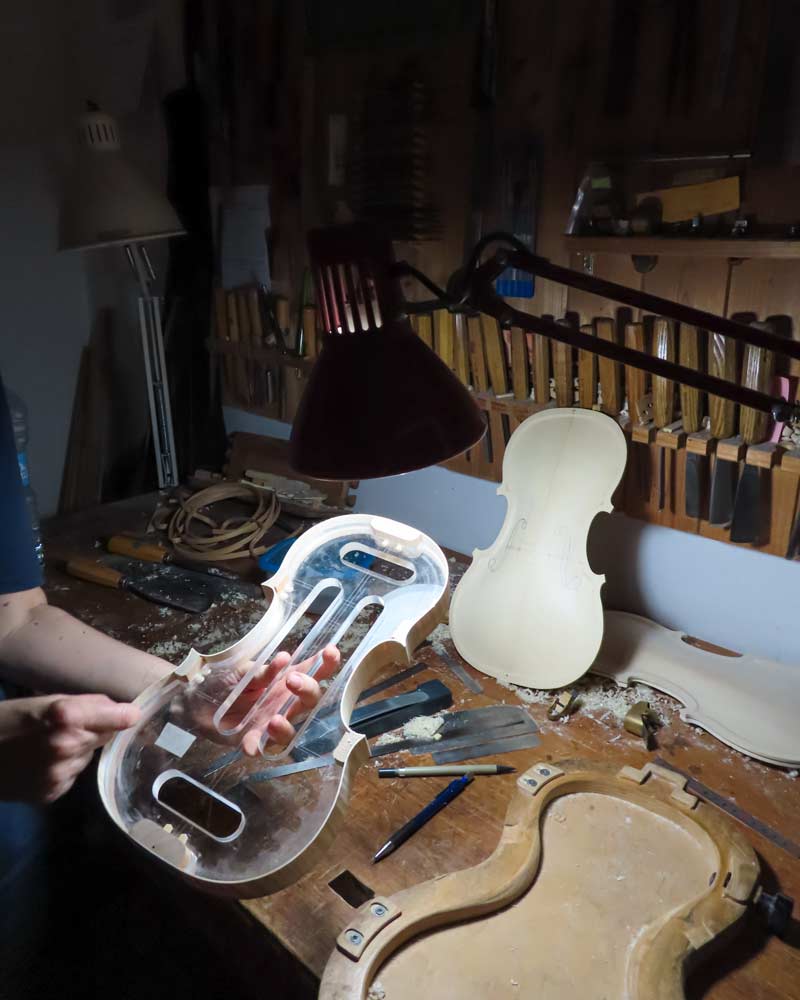
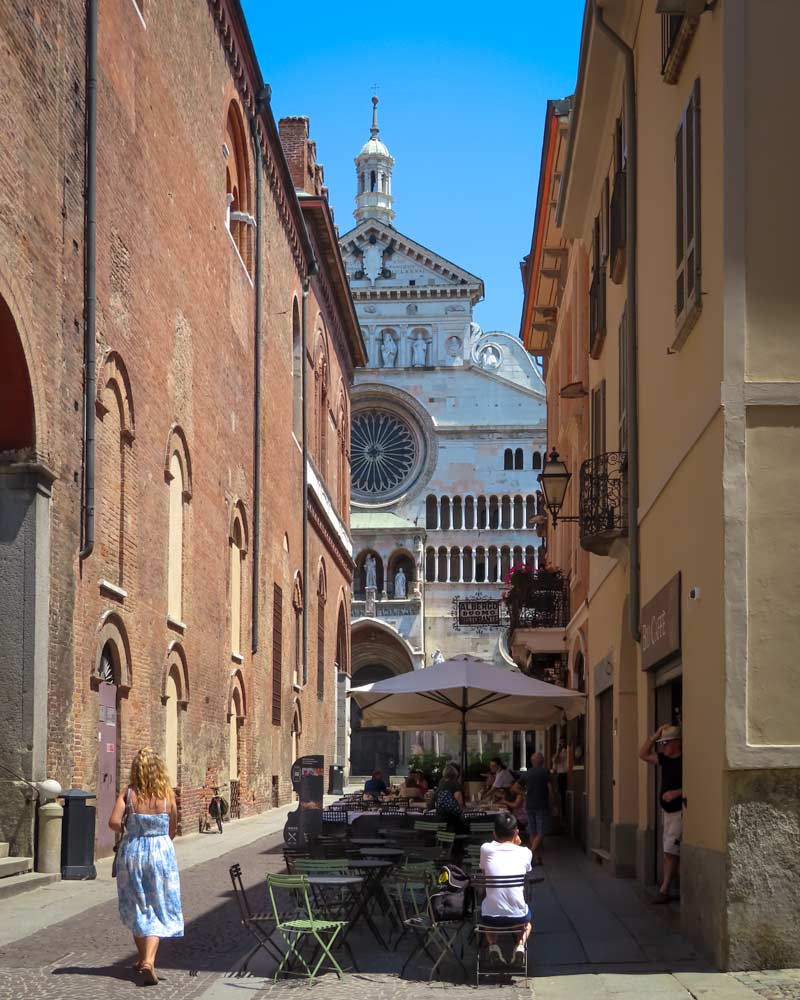
‘14,000 Euros’ Janet gasped in disbelief as Marianne Jost showed us around the violin workshop she shared with her husband.
With each one of these handmade violins taking upwards of three months to put together, always to order delicately, the cost started to seem justified. It isn’t your amateur newbie who is likely ordering a violin from Marianne; it’s a passionate player who wants to invest in their art.
The workshop tour took us through the stages of the violin, from the sourcing of the wood to the tools used. Cutting out, sanding down, and piecing together these beautiful instruments is indeed a much more time-consuming task than I ever knew possible, and I left that workshop with a newfound respect for all those who are keeping traditional woodwork alive.
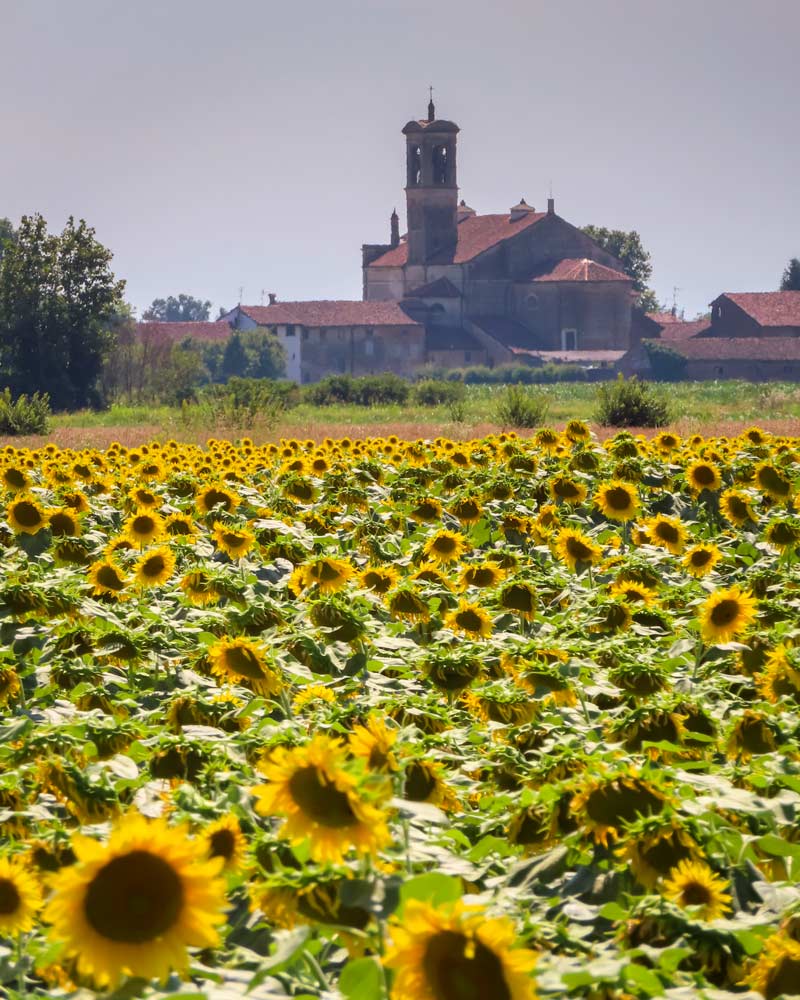
‘I really enjoyed that’, I confessed to Janet as we returned to our car. I’d known little more about Cremona before we arrived, but it had turned out to be one of those curious places that you venture to, unsure of what you’ll find or whether you’ll enjoy it.
For those who have a passion for violins, the draw is undeniable, but it’s also a pleasant city break or day trip from Milan, especially for visitors looking to enjoy Lombardy at a more relaxed pace. Likewise, it is ideal for visitors to nearby Venice who want a slice of the classics without the crowds.
Cremona, your mustardy-flavoured fruit and passionate artists surprised me in all the right ways.
Need to know: Cremona
Tips and insights to make planning your visit to Cremona a little easier.
Where to stay in Cremona on a budget: L’Archetto offers both dorm and private rooms, a short walk from the city centre. The clean, simple rooms get good write-ups, and the dorms aren’t bunk beds, which is always a bonus!
Where to stay in Cremona like a baller: For those with a car, the Agriturismo Cascina Farisengo, which is around four kilometres out from Cremona, might be the perfect option. A restored country house centred around a grand courtyard, it will suit those looking for that lazy Lombardy vibe on their vacations.
How to get to Cremona: From Milan, it takes around 90 minutes to drive to Cremona, where we quickly found parking on a Sunday morning. Direct trains run at just over an hour from Milano Centrale, though they are less frequent than the two-hour service with a connection in Treviglio.
Where to go after Cremona: Check out my guide on things to do in Lombardy to plan the rest of your trip.
More information on Cremona can be found on the Cremona InfoPoint website or the Lombardy tourism website.

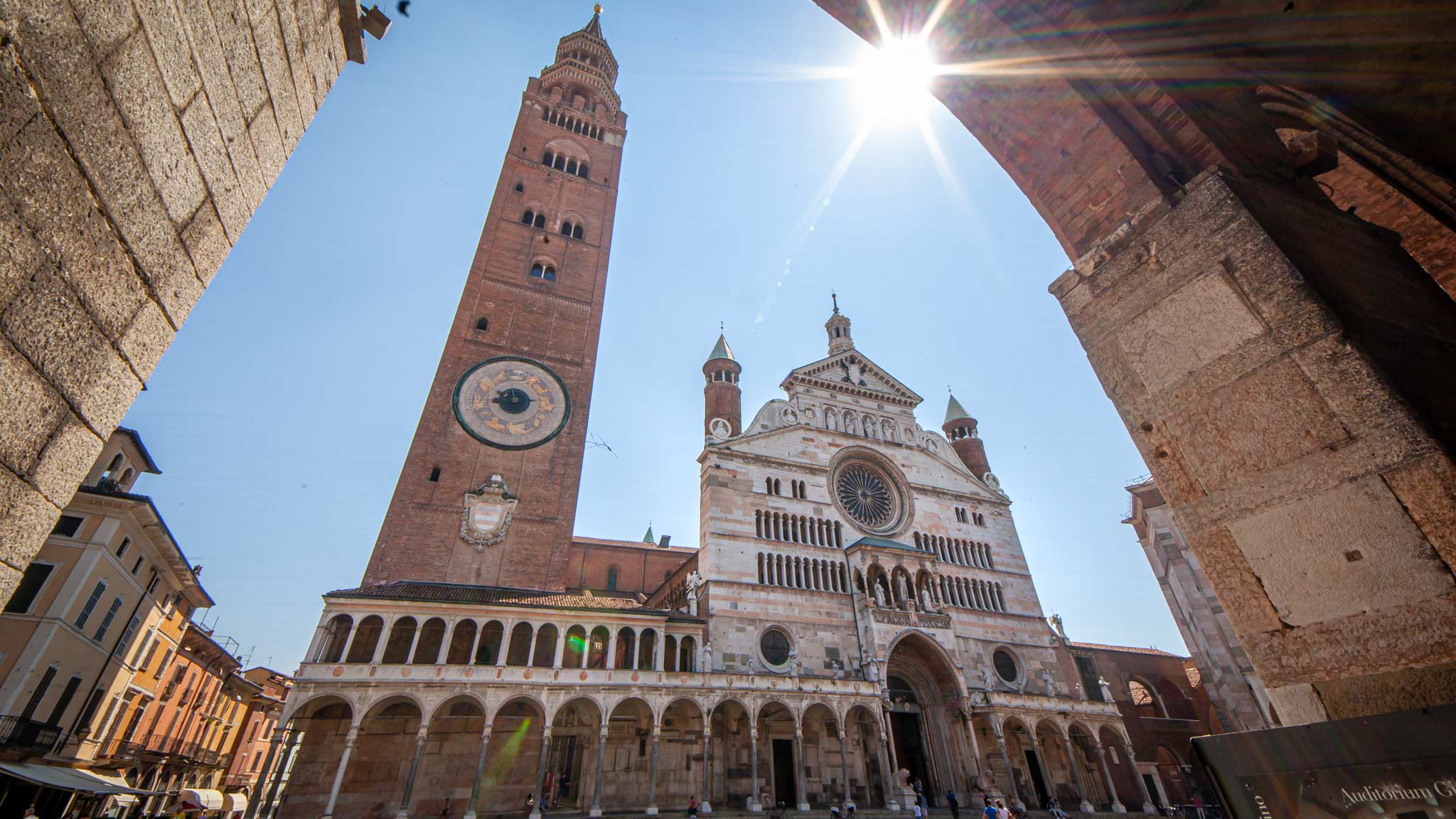



Leave a Reply
Want to join the discussion?Feel free to contribute!